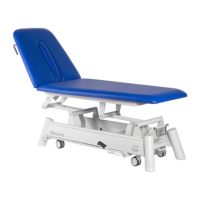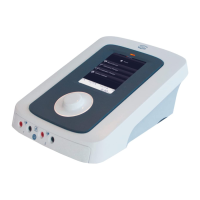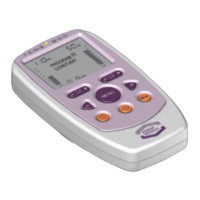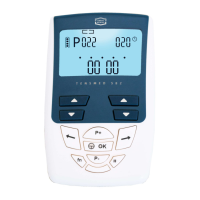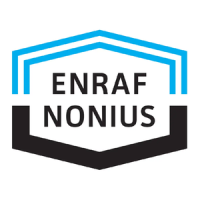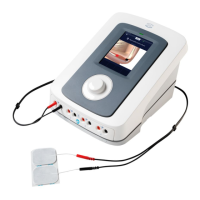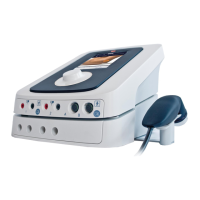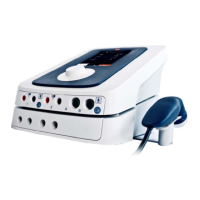1600751-4D
• Skin irritation and burns beneath the electrodes have been reported with the use of
therapeutic electrical stimulation.
4.2.2 Current Waveforms
For muscle stimulation the 6-series offers the current waveforms described in paragraphs 4.3.3
- 4.3.6. These waveforms are often applied in combination with a surge program, which consists
of a sequence of exercise and rest periods. Two options are available here:
• Reciprocal application, where stimulation alternates between agonists and antagonists.
This is accomplished through asynchronous stimulation over two current channels with
an appropriate delay between the two channels.
• Co-contract application, where two channels operate synchronously to co-contract
agonist and antagonist or different sections of a larger muscle group.
See paragraph 11.2.11.a for the available parameters.
4.3 Description: Current Waveforms
4.3.1 4 Pole Interferential Currents
With the interferential current type a medium frequency carrier frequency is used to pass the low
frequency stimulation (beat) frequency through the skin. The relatively low resistance of the skin
to the carrier frequency contributes to the patient comfort that is often associated with this
current type. Interferential currents are all AC currents without any residual DC components.
Several variations of the interferential current type are known, the following of which are
available in the 600-series:
4.3.1.a Classical Interferential
With this therapy method four electrodes are used and two non modulated currents are
generated. The frequency of one channel is fixed at the carrier frequency, while the other
channel has a variable frequency, based on the Beat frequency and Frequency
Modulation settings. Interference occurs where the two currents intersect in the tissue.
The modulation depth (which determines the current amplitude of the stimulation)
depends on the direction of the currents, and can vary from 0 to 100%. 100% modulation
depth only occurs at the diagonals (and hence at the intersection) of the two currents.
This is of course a theoretical situation, based on the assumption that the tissue is
homogeneous. In reality, the tissue is heterogeneous, so that the current balance
between the two channels has to be used to get the 100% modulation depth (Fig. 1).
The current balance can also be used to compensate for differences in sensation
occurring under the electrode pairs.
Modulation depth is only 100% at
the diagonals.
